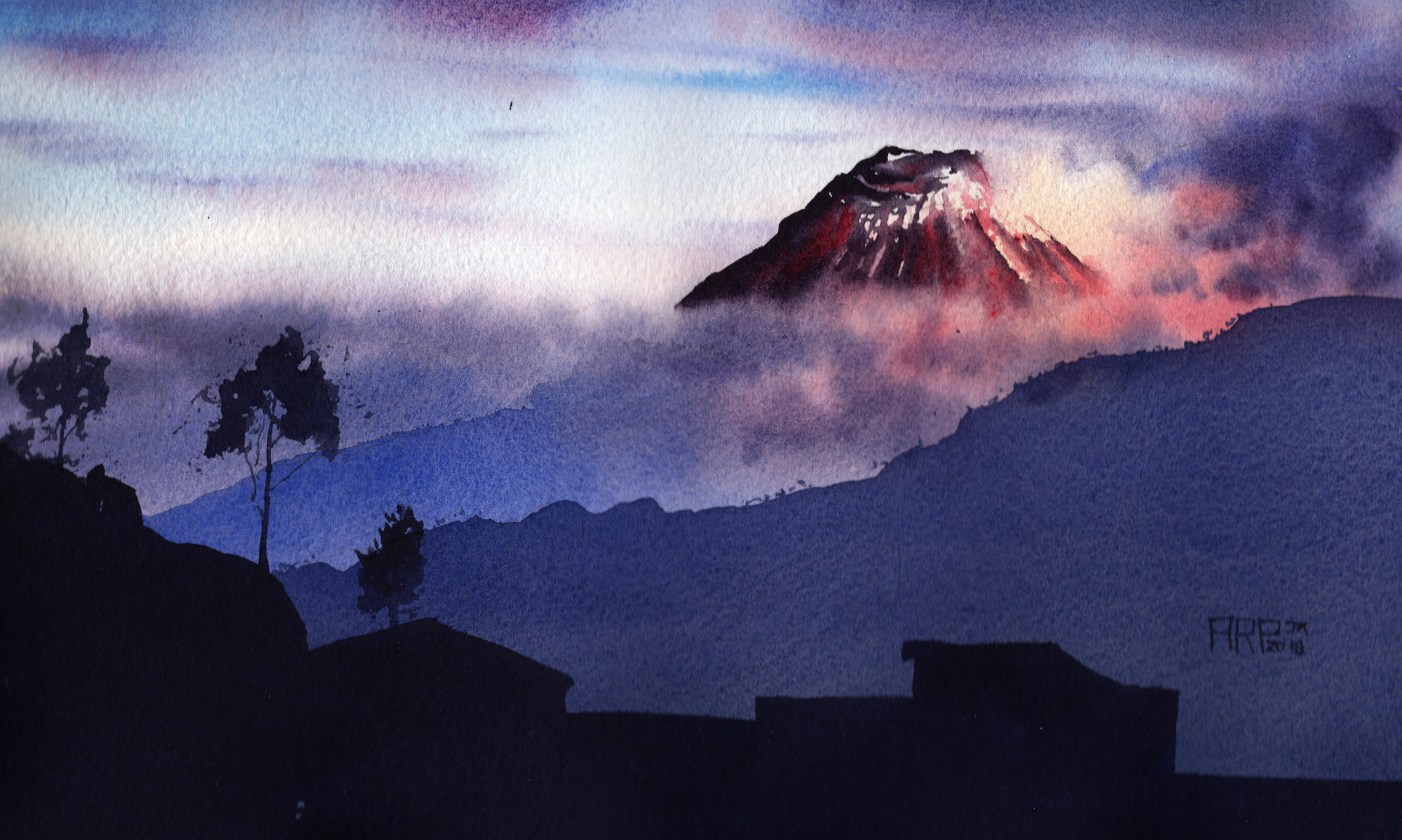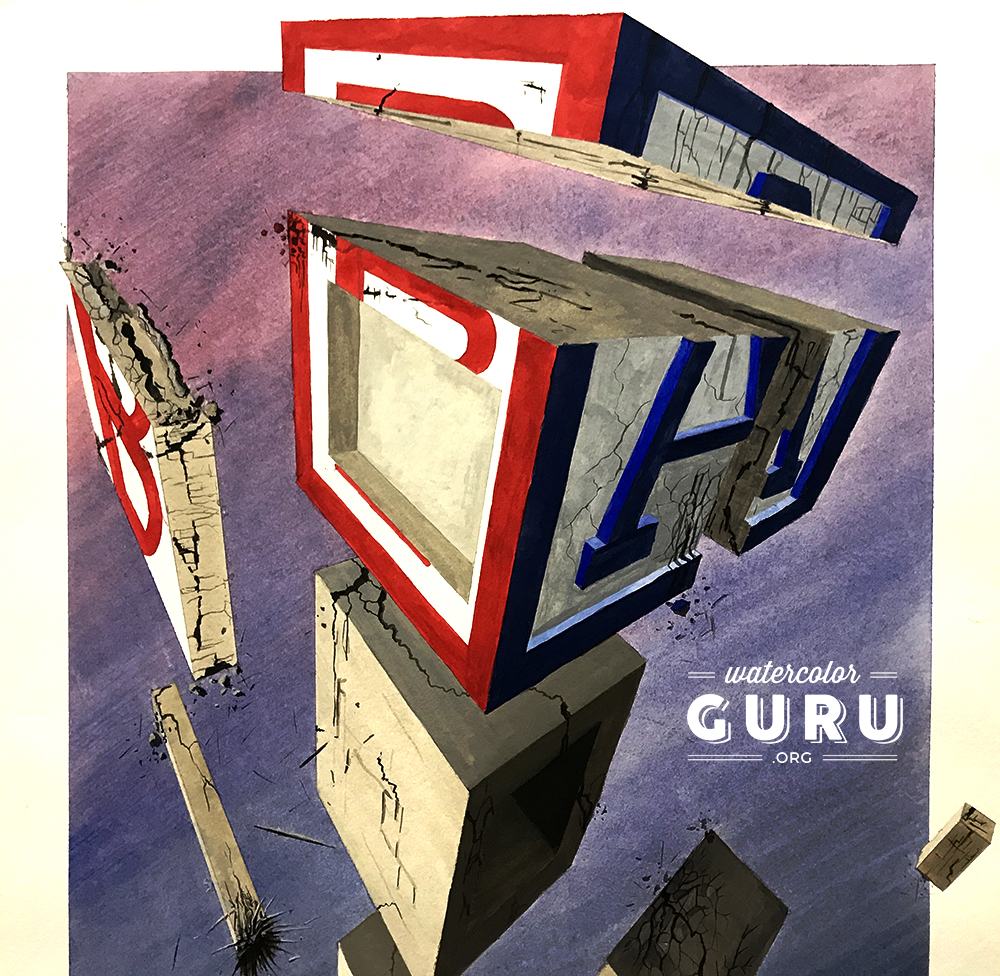Hey guys! Today’s topic maybe isn’t the most watercolor specific, but hey, it’s drawing specific, and drawing is the foundation of everything we do.
Saying “I want to teach you about linear perspective” is like saying “let’s take a look at your income taxes” or “you should really be doing more cardio.” It’s an icky subject that a lot of people tend to avoid, but is more important than we like to admit.
As a brief review, linear perspective is the method we use to give our drawings the illusion of depth, space, and distance, especially in the case of geometric objects like buildings (even though the same rules apply for organic things like people and landscapes.) The basic principle of linear perspective is that objects appear to become smaller as they get further away from you, and larger as they grow closer. This is intuitively true, but since we see it constantly, we usually don’t think about it.
In normal vision, parallel lines appear to get closer together and finally merge at the horizon. This point where parallel lines meet is called the vanishing point.
For instance, imagine standing on a set of railroad tracks in the middle of a vast, flat desert. Looking down the rails, what will you see? Naturally, the parallel lines will appear to get closer together, finally meeting on the horizon. This is one point perspective.
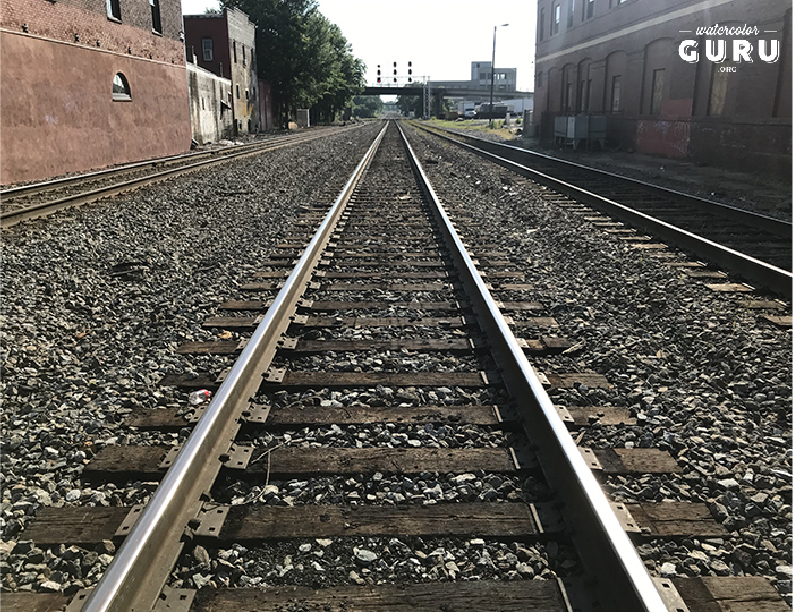
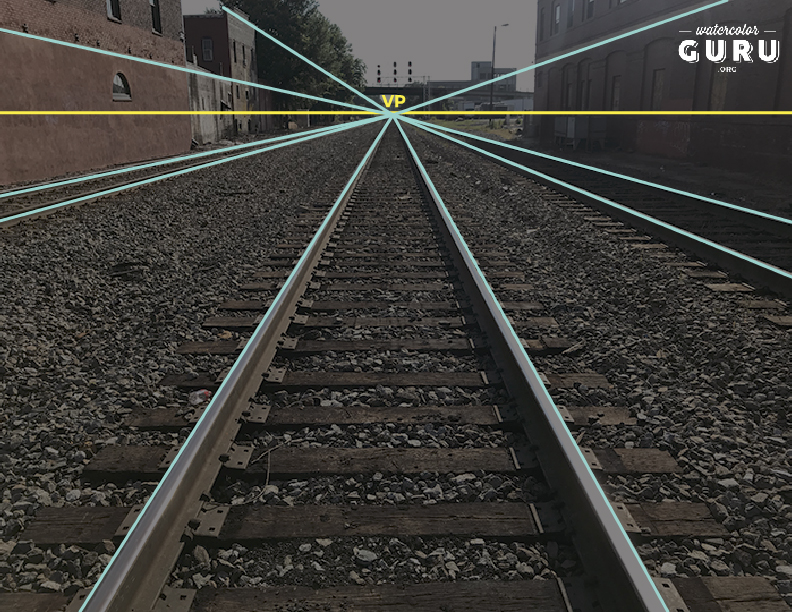
What about if you’re in the middle of an intersection in a busy downtown, looking at the corner of a building? In this instance, each side of the structure will have its own set of parallel lines, perpendicular to each other, which each have their own vanishing points, outside your field of vision. All of the lines in the grid system will point toward these two vanishing points, which is why we call it two point perspective.
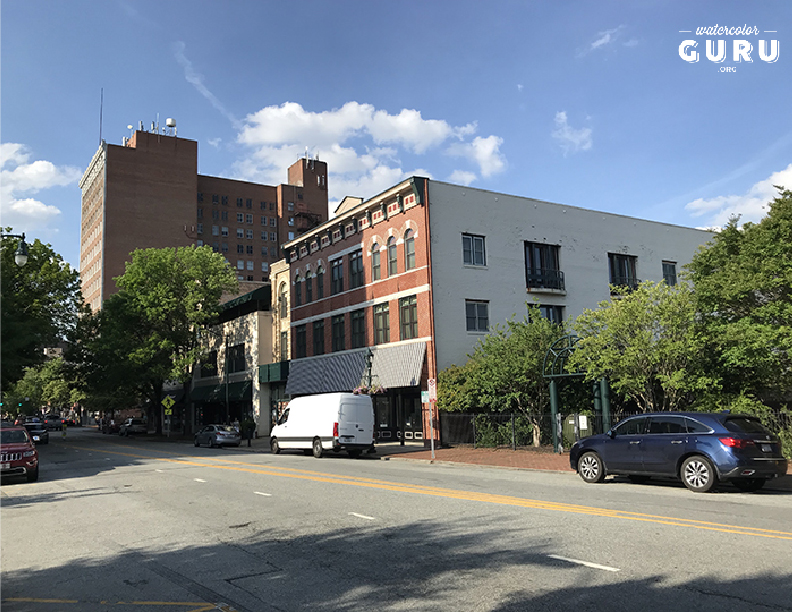
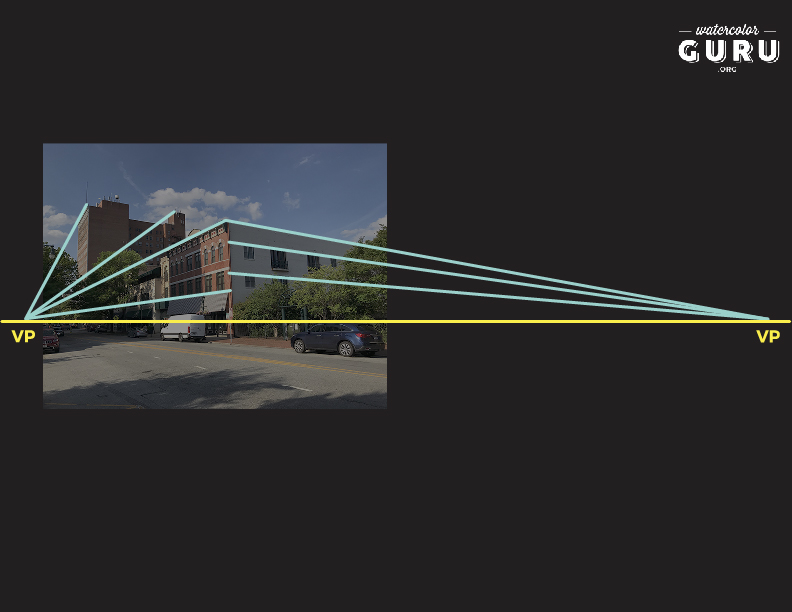
And finally, what if you have a worm’s eye view, looking up at a tall building, or a bird’s eye view looking down at that same structure? In that case, the vertical lines will also go toward a vanishing point. This is three point perspective.
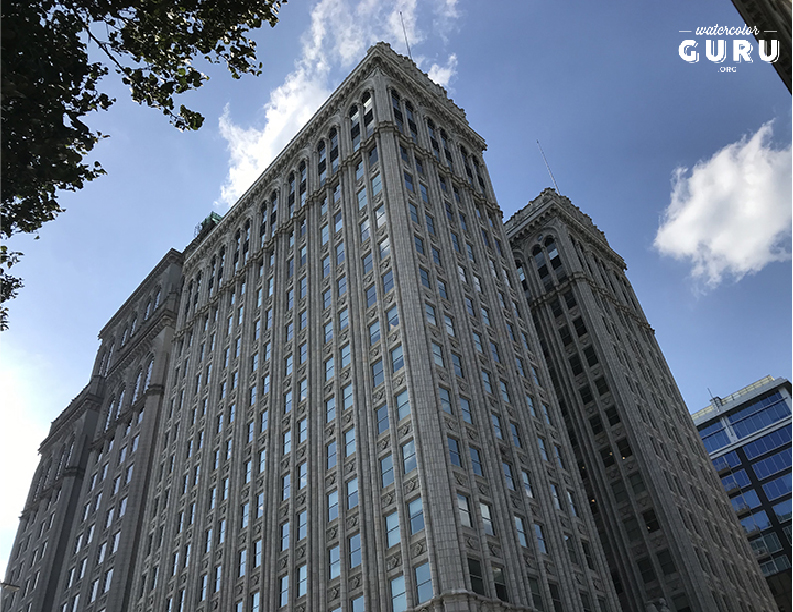
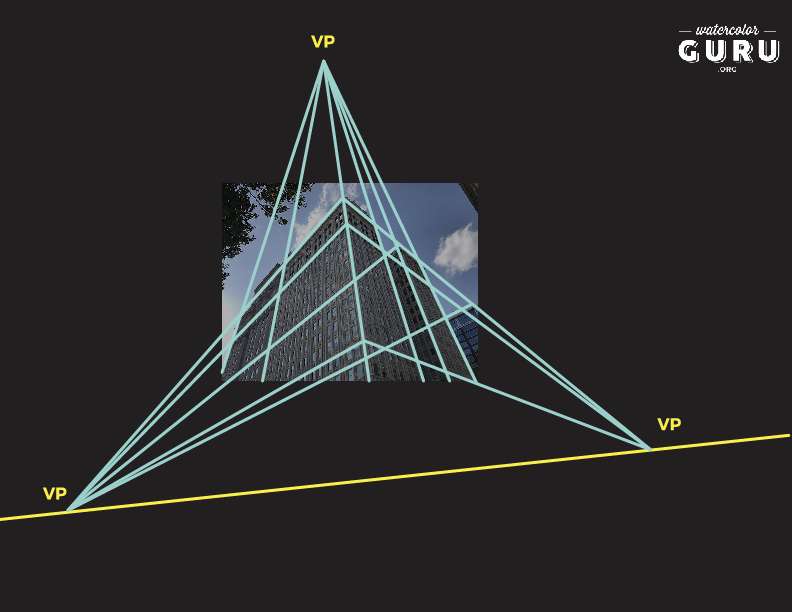
Lost yet? Not to worry, I’ve created step-by-step guides for drawing each of those cases. You can download them here:
Of course, this article doesn’t even scratch the surface of what there is to know about linear perspective – nor does it cover the exact methodology of how to utilize it. Just remember, perspective is a tool that can help you make your paintings more realistic. The more tools you have in your toolbox, the better your paintings will be.
What other challenges have you had drawing? Let me know in the comments. Let’s all get better together!
